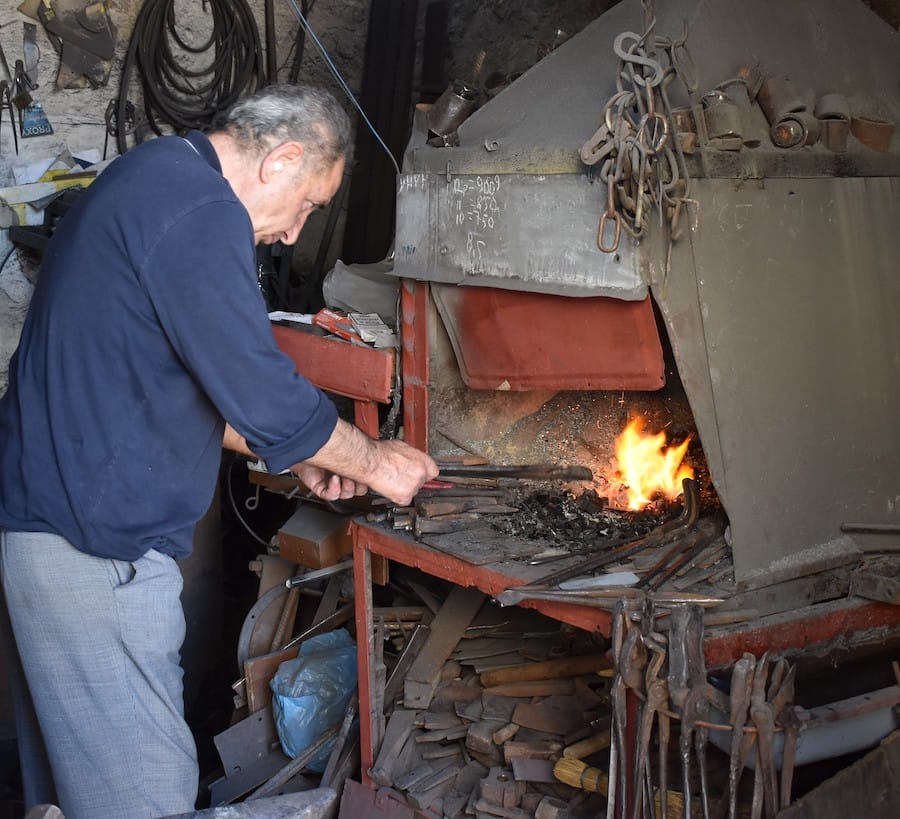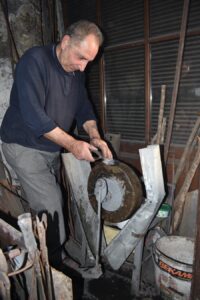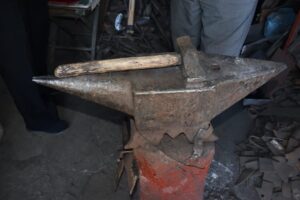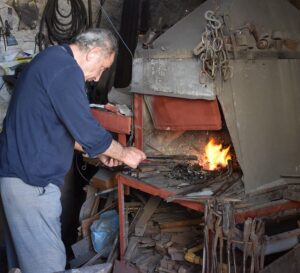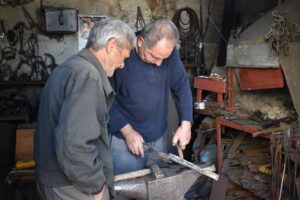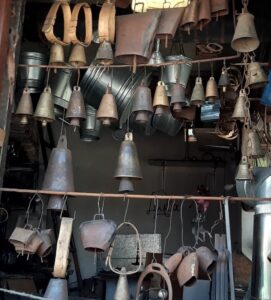Iron treatment is one of the crafts in the Korça district and is mostly practiced by the Egyptian community and beyond. Even today, metalsmiths or merely smiths are spread throughout the district as they produce mainly agricultural tools, axes, horseshoes, adzes, sheep bells, and the like, commonly used in the day-to-day work of village communities. This craft has been passed down from generation to generation till the present day. It runs mainly in the family, from father to son, and so on.
Treating (tempering) of an object in the forge (smithy).
First, a special iron for the object to be produced is taken. This workpiece is placed on the forge (furnace) from where the name smith has derived. Next, the fire is lit with charcoal by means of a blacksmith’s bellow (which nowadays has been replaced by an air blower), and the metal workpiece is placed amidst embers and left there until well heated and ready for manipulation. The workpiece is picked up with tongs and placed on the kurdë (anvil), where it is hammered until taking the desired shape. Once this process is over, the workpiece is ready to be further worked on the vise. During this process, it is carefully checked on all sides to have the proper sharpness and shape. The next step is passing to the whetstone for sharpening. As soon as this step is over, the workpiece is placed back onto the kurdë where several holes are punched with a hammer and chisel, which serve to prevent it from sliding away. In the end, the product obtained is dropped into water to undergo tempering so that it does not break. The water should always have an appropriate temperature, according to the type of material.
Before the 90s, this craft attracted greater attention, but in recent years interest in this craft has declined since such products are most often manufactured by machinery or even exported.
In older timers, the city of Korça accommodated about 40 forges, but this number has nowadays shrunk to as few as 2 or 3 of them, having regard to the forge’s role as the basis of agriculture. All forges were previously located in Pazari i Vjetër (the Old Bazaar) on the street called Rruga e Koveçërve (Street of Smiths).

